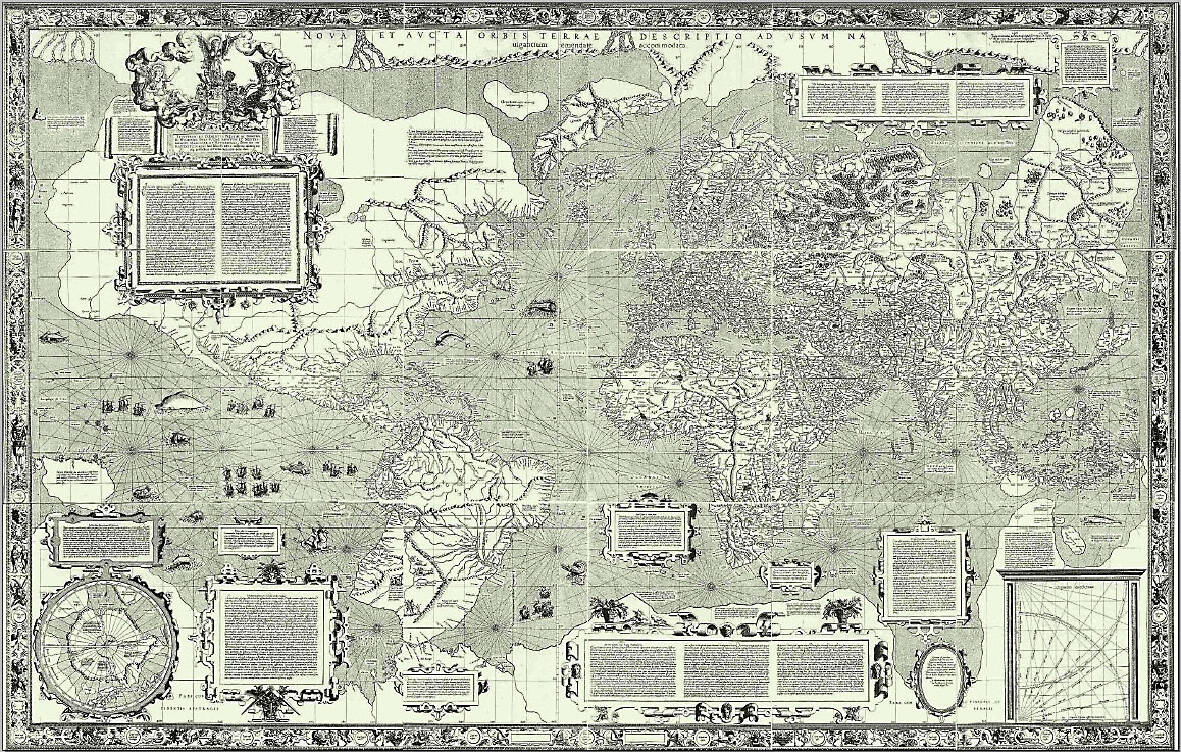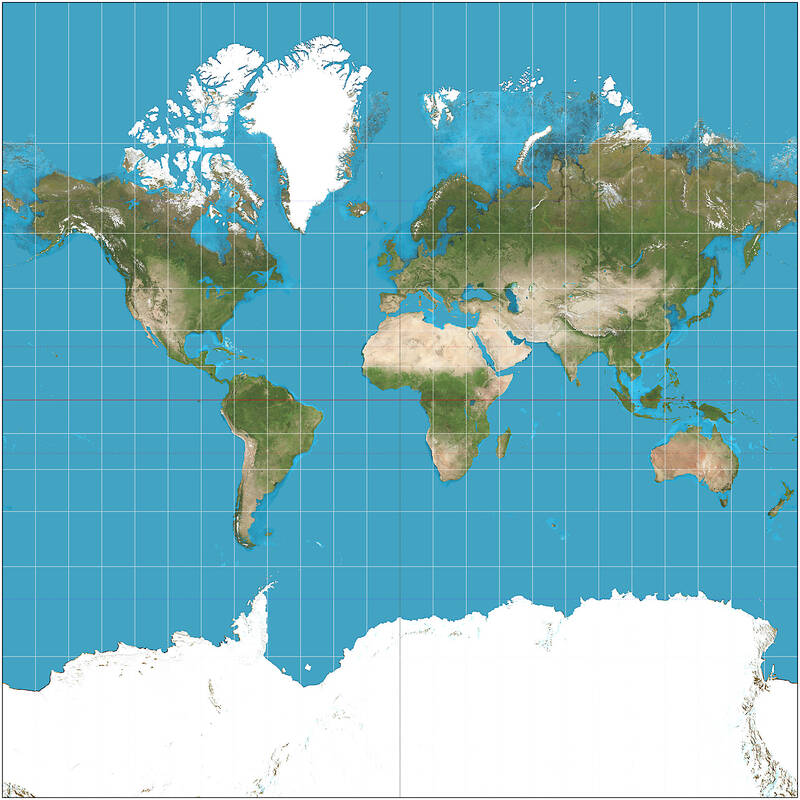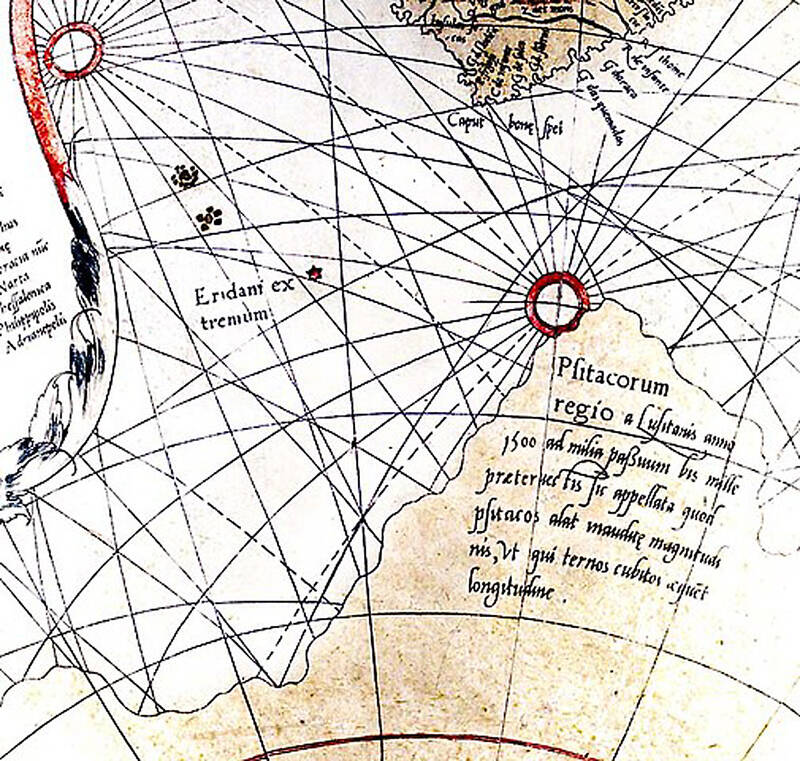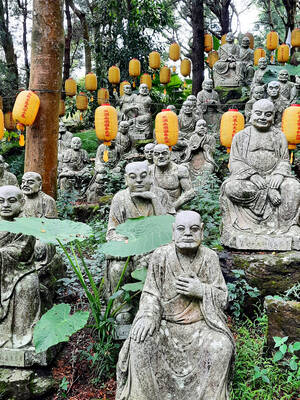The Mercator world map, long a fixture in classrooms globally, makes the European Union appear almost as large as Africa. In reality, Africa is more than seven times bigger. It is a distortion that has prompted a new African initiative, “Correct the Map,” calling for depictions that show Africa’s true scale.
“For centuries, this map has minimized Africa, feeding into a narrative that the continent is smaller, peripheral and less important,” said Fara Ndiaye, co-founder of Speak Up Africa, which is leading the campaign alongside another advocacy group, Africa No Filter.
Accurately translating the Earth’s sphere into a flat map always calls for compromises, requiring parts to be stretched, cut or left out, experts said.

Photo courtesy of Wikimedia Commons
Historically, maps have reflected the worldview of their makers. Babylonian clay tablets from the sixth century BC placed their empire at the center of the world, while medieval European charts often focused on religious sites.
Choices must be made: a world map will look very different depending on whether Australia, Siberia or Europe is placed at its center.
Today’s most-used map was designed for maritime navigation by Flemish cartographer Gerardus Mercator in 1569. It focused on accurate depictions of the shapes and angles of land masses, but their relative sizes were often inaccurate.

Photo courtesy of Wikimedia Commons
Mercator’s projection inflated northern regions and compressed equatorial ones, making Europe and North America appear much larger, while shrinking Africa and South America.
The distortions are stark: a 100-square-kilometer patch around Oslo, Norway, looks four times larger than the same area around Nairobi, Kenya. Greenland appears as large as Africa, even though it is 14 times smaller.
STRIKING A BALANCE

Photo courtesy of Wikimedia Commons
Alternatives to the Mercator emerged in the 20th century, including one from 1921 by Oswald Winkel and another in 1963 by Arthur Robinson that reduced distortions but sacrificed precision. The 1970s Gall-Peters projection restored proportional sizes but stretched shapes.
To strike a balance between accuracy and aesthetics, cartographers Tom Patterson, Bojan Savric and Bernhard Jenny launched the Equal Earth projection in 2018. It makes Africa, Latin America, South Asia and Oceania appear vastly larger.
“Equal Earth preserves the relative surface areas of continents and, as much as possible, shows their shapes as they appear on a globe,” Savric said. This is the projection now endorsed by the African Union. Speak Up Africa says the next steps of their campaign are to push for adoption by African schools, media and publishers.
“We are also engaging the UN and UNESCO (its cultural body), because sustainable change requires global institutions,” Ndiaye said.
’NAIVE’ CONTROVERSY
Some critics reject claims of bias.
“Any claim that Mercator is flagrantly misleading people seems naive,” said Mark Monmonier, a Syracuse University geography professor and author of How to Lie with Maps. “If you want to compare country sizes, use a bar graph or table, not a map.”
Despite its distortions, Mercator remains useful for digital platforms because its focus on accurate land shapes and angles makes “direction easy to calculate,” said Ed Parsons, a former geospatial technologist at Google.
“While a Mercator map may distort the size of features over large areas, it accurately represents small features which is by far the most common use for digital platforms,” he said.
Having accurate relative sizes, as with the Equal Earth map, can complicate navigation calculations, but technology is adapting.
“Most mapping software has supported Equal Earth since 2018,” Savric said. “The challenge is usage. People are creatures of habit.”
Some dismiss the whole thrust of the African campaign. Ghanaian policy analyst Bright Simons says the continent needs more than a larger size on maps to “earn global respect.”
“South Korea, no matter how Mercator renders it, has almost the same GDP as all 50 African countries combined,” he said.
But advocates remain convinced of their cause. “Success will be when children everywhere open their textbooks and see Africa as it truly is: vast, central and indispensable,” Ndiaye said.

Oct. 27 to Nov. 2 Over a breakfast of soymilk and fried dough costing less than NT$400, seven officials and engineers agreed on a NT$400 million plan — unaware that it would mark the beginning of Taiwan’s semiconductor empire. It was a cold February morning in 1974. Gathered at the unassuming shop were Economics minister Sun Yun-hsuan (孫運璿), director-general of Transportation and Communications Kao Yu-shu (高玉樹), Industrial Technology Research Institute (ITRI) president Wang Chao-chen (王兆振), Telecommunications Laboratories director Kang Pao-huang (康寶煌), Executive Yuan secretary-general Fei Hua (費驊), director-general of Telecommunications Fang Hsien-chi (方賢齊) and Radio Corporation of America (RCA) Laboratories director Pan

President William Lai (賴清德) has championed Taiwan as an “AI Island” — an artificial intelligence (AI) hub powering the global tech economy. But without major shifts in talent, funding and strategic direction, this vision risks becoming a static fortress: indispensable, yet immobile and vulnerable. It’s time to reframe Taiwan’s ambition. Time to move from a resource-rich AI island to an AI Armada. Why change metaphors? Because choosing the right metaphor shapes both understanding and strategy. The “AI Island” frames our national ambition as a static fortress that, while valuable, is still vulnerable and reactive. Shifting our metaphor to an “AI Armada”

When Taiwan was battered by storms this summer, the only crumb of comfort I could take was knowing that some advice I’d drafted several weeks earlier had been correct. Regarding the Southern Cross-Island Highway (南橫公路), a spectacular high-elevation route connecting Taiwan’s southwest with the country’s southeast, I’d written: “The precarious existence of this road cannot be overstated; those hoping to drive or ride all the way across should have a backup plan.” As this article was going to press, the middle section of the highway, between Meishankou (梅山口) in Kaohsiung and Siangyang (向陽) in Taitung County, was still closed to outsiders

The older you get, and the more obsessed with your health, the more it feels as if life comes down to numbers: how many more years you can expect; your lean body mass; your percentage of visceral fat; how dense your bones are; how many kilos you can squat; how long you can deadhang; how often you still do it; your levels of LDL and HDL cholesterol; your resting heart rate; your overnight blood oxygen level; how quickly you can run; how many steps you do in a day; how many hours you sleep; how fast you are shrinking; how